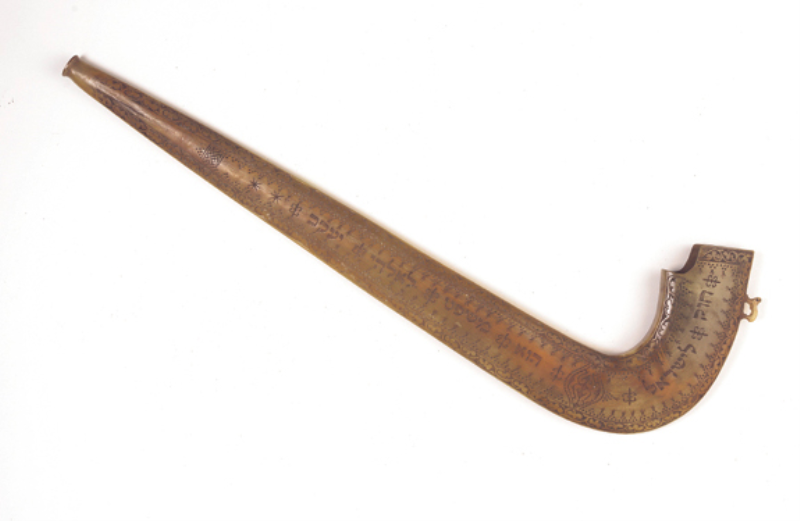18th Century Shofar

Shofar • Jewish Museum London
This gorgeous shofar from the Jewish Museum London is engraved with a Hebrew inscription reading “Blow the horn on the new moon, at the beginning of the month for our day of festival; or it is a statute for Israel, a decree of the God of Jacob” in a frame of foliage. Dating from the 18 century and probably of Germanic origin, it was used in the Great Synagogue of London.
The Great Synagogue was once the centre of Ashkenazi Jewish life in London. Built in about 1690 at Duke’s Place, north of Aldgate, it was the earliest Ashkenazi synagogue constructed in London after the return of Jews to England in the 17th century. It was destroyed during World War II, in the Blitz.
Shofars are ancient musical horns traditionally made of ram’s horn. They are blown in synagogue services on Rosh Hashanah, the Jewish New Year, and at the very end of Yom Kippur, and are also blown every weekday morning in the month of Elul running up to Rosh Hashanah.
We love this treasure for the beauty and elegance of the shape and engraving, and for the link it gives to the destroyed Great Synagogue.
Discover more Hidden Treasures
Hidden Treasures: Celebrating the documents, photos and artefacts in British archives that tell the story of Jews in Britain